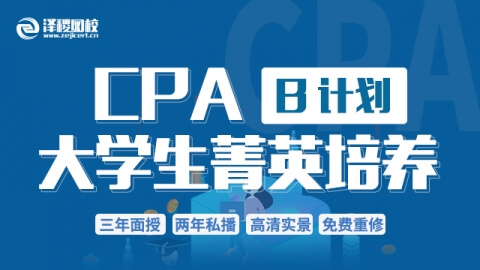ACCA考官报告F2 2015.12
General Comments
The examination consists of two sections. Section A of the paper contains 35 objective test questions – each worth 2 marks, and section B contains 3 MTQs worth ten marks each. All questions are compulsory. The paper is two hour examination. A specimen paper reflecting this structure is available on the ACCA website together with a number of practice MTQs
As always, excellent scores were achieved by some candidates. I congratulate both them and their teachers. I offer my commiserations to those who were not successful.
In section A the worst answered MCQ questions were calculation based. Calculation questions accounted for approximately 46% of section A questions, and as usual were answered worse than the narrative based MCQs.Seven out of the 10 worst answered section A questions were calculation based in the December diet.In section B 60% of the marks were for calculation. There was little difference in performance between section B calculation and narrative questions.
As is usually the case for this paper, F2 candidates on average, performed better than FMA candidates.
The following questions are ones where the performance of candidates was very weak.
Section A Sample questions for discussion
Example 1
A company’s total operating cost is semi variable. It flexes its profit budget from an output level of 1,000 units to
an output level of 2,000 units.
Which of the following statements is true?
A Operating profit will double between the two output levels
B Fixed cost per unit at the two output levels will be the same
C Total contribution will double between the two output levels
D Contribution per unit will increase between the two output levels
This was a badly answered question with only 20% of candidates choosing the correct answer. It covers syllabus area B 2 a and A 3g.
Candidates often appear to find questions that ask for the effect of a change in input data on performance indicators difficult. It may help them to “invent” simple figures to test the validity of the statements on offer.
For example if we assume a sales price of $10 per unit ,a variable cost of $2 per unit and a fixed cost of $4,000 per period, then the following figures can be quickly produced.
It is soon apparent that alternative C is correct, and that the rest are incorrect.
Incorrect answers appear to have been selected because of confusion between “per unit “ and “total” figures.
For example B was most popular alternative. This suggests some confusion between fixed cost per unit (which will decrease as volume increases) and total fixed cost (which will remain the same).
Choosing option D again suggest confusion between contribution per unit (which will remain constant) and total contribution (which will increase in direct proportion to volume).
Candidates are recommended to plot some graphs of total costs and revenues with respect to volume, and cost and revenue per unit with respect to volume to ensure they fully understand this area.
Example 2
The following spreadsheet shows part of a time series analysis of a company’s sales.
What is the four quarter centred moving average of sales units for quarter 4, 2014?
A 2,500
B 5,025
C 5,000
D 10,000
This question covers syllabus area C2i.
Spreadsheet based questions are commonly some of the worst answered questions on the paper and this one
proved no exception The correct answer is A. This is arrived at by averaging the four quarter moving totals that straddle quarter 4, 2014.( (9,000 + 11,000) ÷ 2 = 10,000). This gives a centred moving total, which when averaged over the four quarters (10,000 ÷ 4) gives 2,500.
The most popular choice was D. Candidates here failed to complete the final step and chose the centred moving total rather than a centred moving average. It is common practice by examiners, when writing multiple choice questions, to offer distractors (wrong answers) based on a figure that occurs part way through the calculation of the right answer. With this in mind candidates should make sure their calculations are complete before looking at the 4 alternative answers on offer.
Alternative B was arrived at by incorrectly averaging the incorrect numbers and demonstrated a lack of understanding of the area. (7,000 + 9,000 + 11,000 + 13,200) ÷ 8 = 5,025.
Alternative C was a variation on D involving dividing the centred moving total by 4. ((9,000 + 11,000) ÷ 4 =5,000).
The similarity of the statistics for this question suggests that a lot of candidates lacked knowledge of the area and tried to guess the right answer. As such candidates may need to revisit time series analysis.
Finally it was clear that many candidates were not performing reasonableness checks on their answers. Sales units per quarter given in the question varied between 1,100 and 4,100.It should have been obvious that the average had to lay somewhere between these numbers leaving alternative A as the only viable solution.
Example 3
A process produces two joint products A and B in equal physical quantities. A and B are sold at split off point for $5 per kg and $8 per kg respectively. There are no further costs after the split off point. If joint costs are apportioned on a relative sales value basis, which of the following statements is true?
A Both products will have the same return on sales ratio (operating margin)
B Product A will have the higher return on sales ratio (operating margin)
C The cost per kg will be the same for both products
D The cost per kg of product A will be higher than that of product B
This question covers syllabus area B3b (xi) and required knowledge of the different methods of apportioning jointcosts. If joint costs are apportioned on a relative sales value basis and there are no further costs after split off point then all joint products will have the same amount of profits per $ of sales. This is arguably the major benefit of this method. Because one product cannot be produced without the other, it makes sense to make them appear equally profitable.
This means that alternative A is correct and that alternative B is incorrect. The popularity of alternative D is perhaps due to confusion between profit per kg and profit per $ of sales.
The physical method of apportioning joint costs apportions equal cost to each kilogram of output. However as this method is not being used, and a kilogram of B has a higher sales value than a kilogram of A , then alternative C is incorrect.
Finally D is incorrect, because as product A has a lower sales price per kilogram than product B, the relative sales value method will apportion less cost per kilogram than product B.
Section B
Section B contains 3 questions, one from each of syllabus areas C Budgeting, D Standard Costing and E
Performance Measurement. This approach will continue in future papers. The balance of MCQ questions in section A reflects this weighting so as to preserve the overall balance of the paper. The spacemen paper reflects the weightings and this balance of questions will be used in future papers.
Common problems with section B questions include the following
A failure to include scrap value of assets in payback and NPV calculations.
An inability to calculate and explain sales volume and sales price variances.
A lack of knowledge concerning residual income.
An apparent difficulty with questions presented in spreadsheet format
A difficulty with questions involving the reconciliation of actual and budgeted figures
Future candidates are advised to:
Study the whole syllabus, because the exam will cover the full syllabus.
Practise as many questions as possible.
Read questions very carefully in the examination
Ensure that their calculations are complete before selecting their answer to multiple choice questions
Try to attempt the “easy” examination questions first.
Not to spend too much time on apparently “difficult” questions.
Attempt all questions in the examination (there are no negative marks for incorrect answers).
For paper exam only, present section B answers as tidily as possible and ensure that all parts of the
question are answered
Read previous Examiner’s Reports.





 白金级认可培训资质(总部)
白金级认可培训资质(总部)
 课程试听
课程试听
 职业规划
职业规划
 ACCA中文教材
ACCA中文教材
 考位预约
考位预约
 免费资料
免费资料




 题库下载
题库下载
 模拟机考
模拟机考




 CFA®成绩查询
CFA®成绩查询




 GARP协会官方认可FRM®备考机构
GARP协会官方认可FRM®备考机构




















